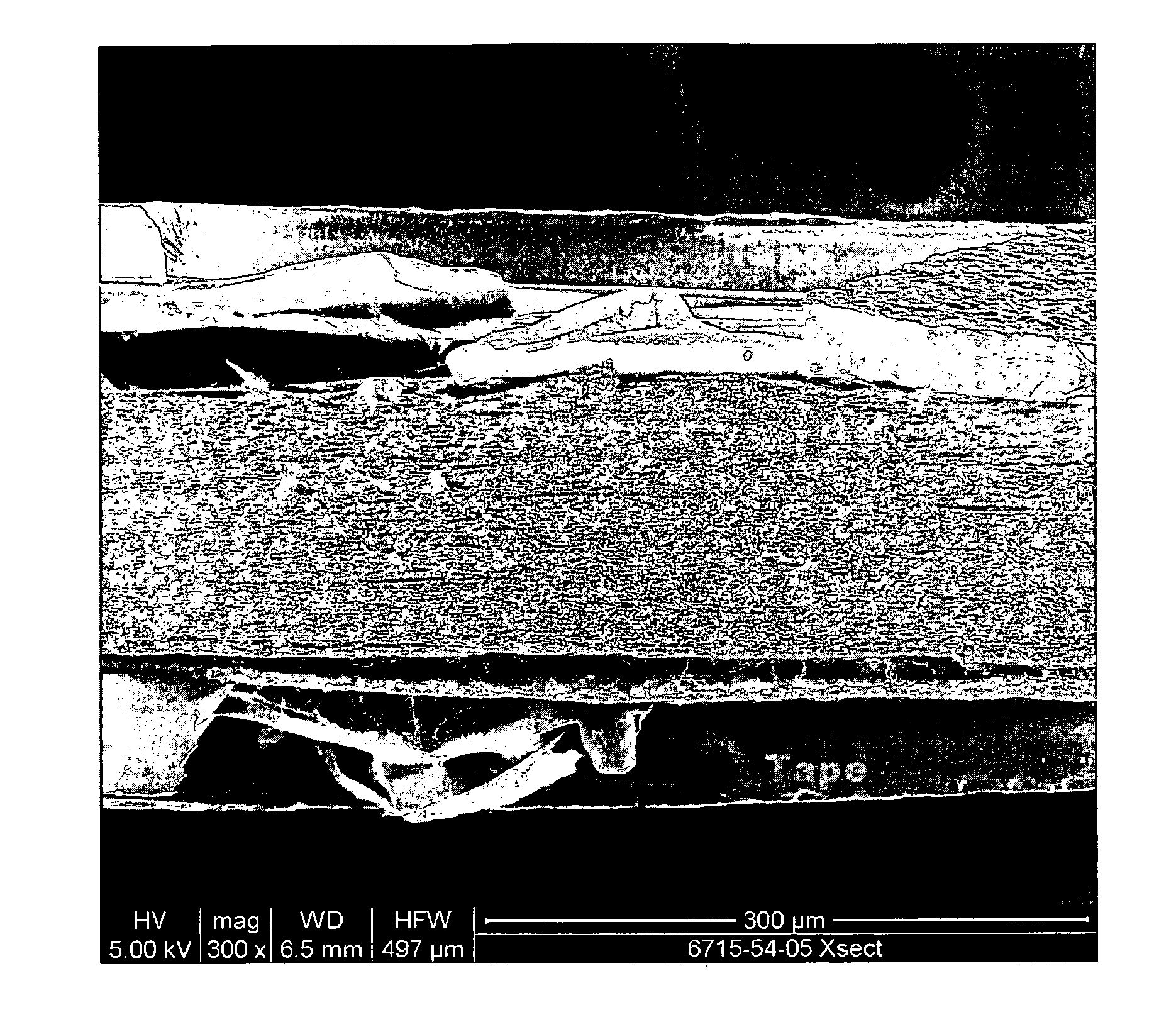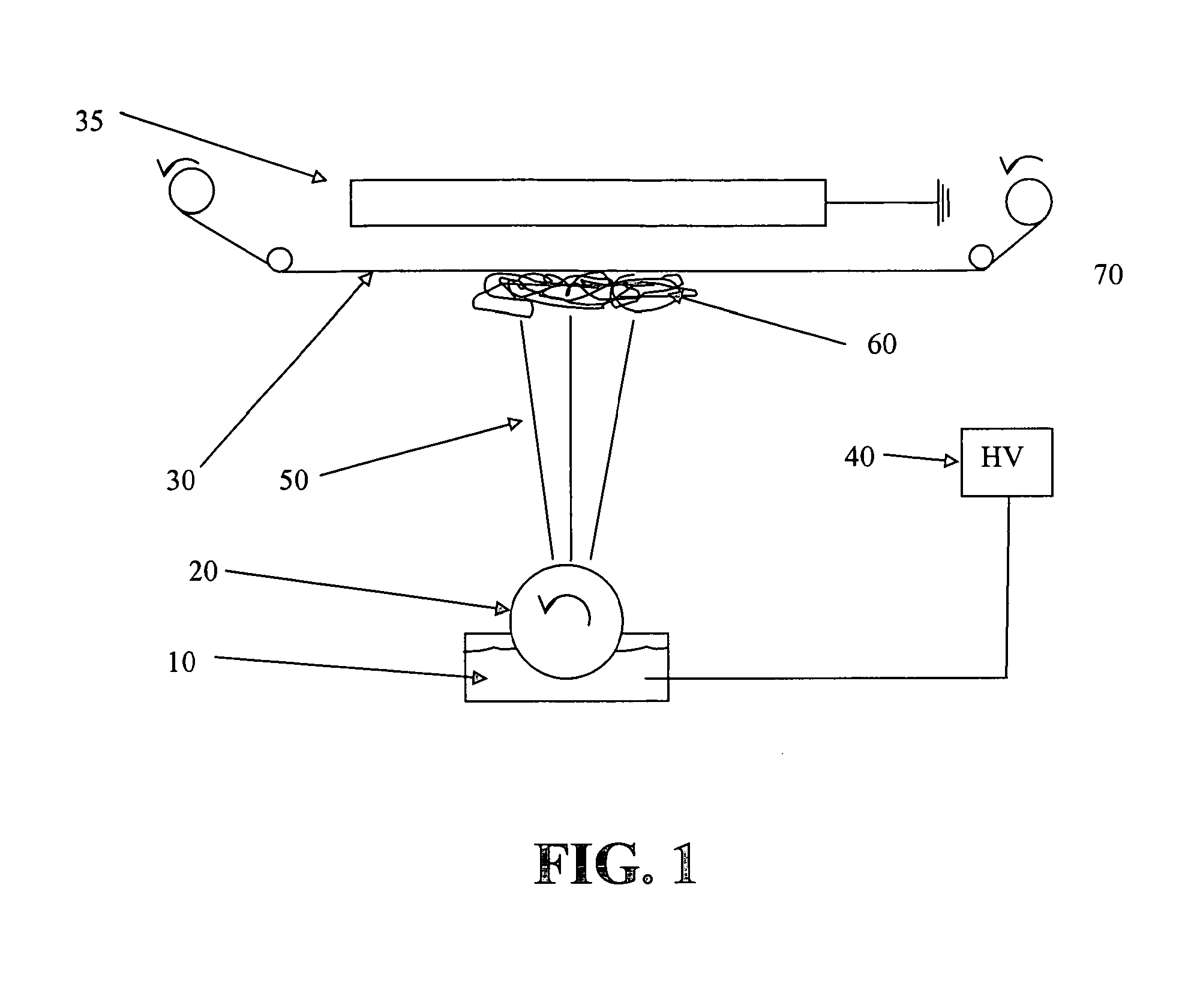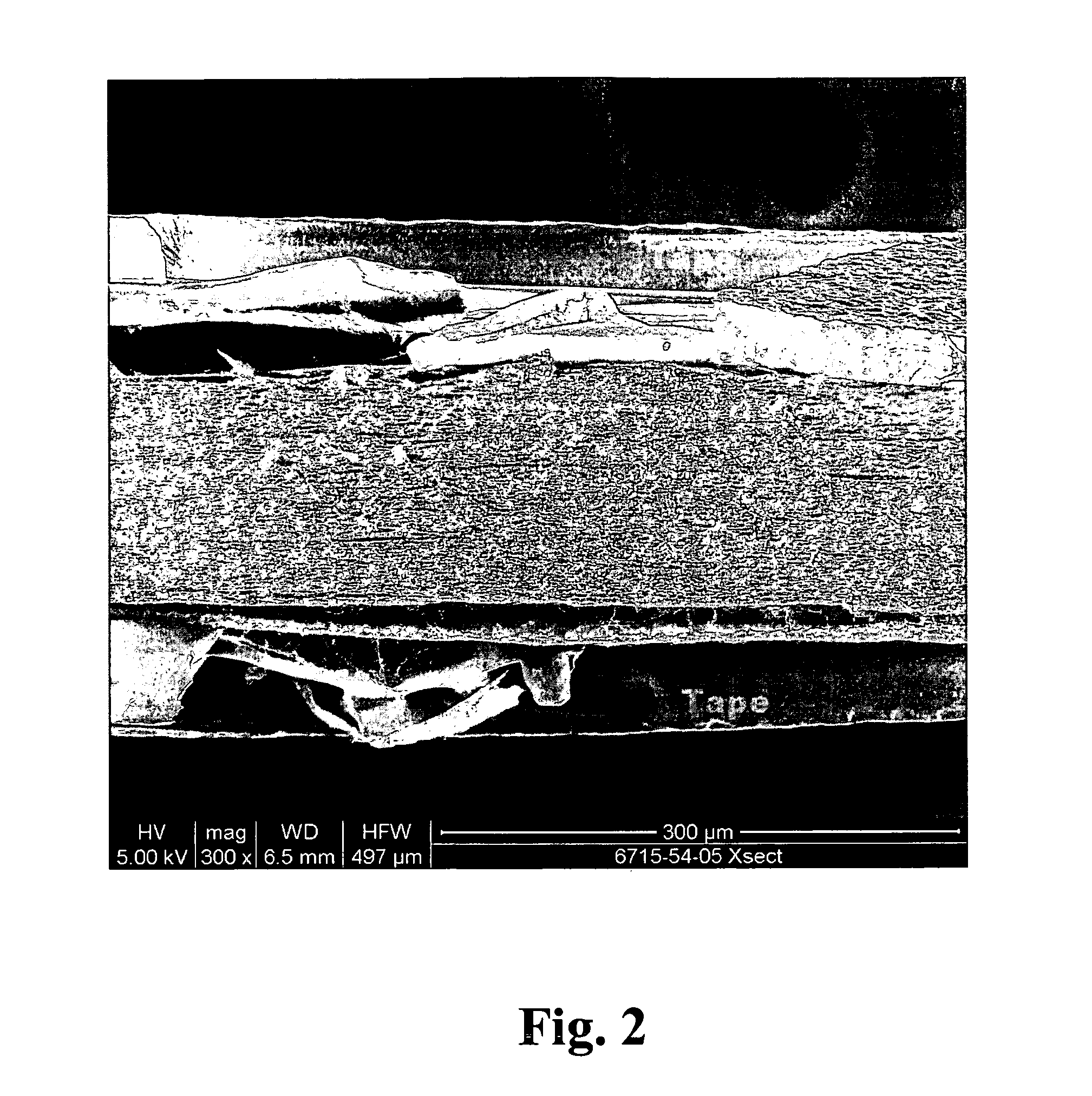Removal of microorganisms from fluid samples using nanofiber filtration media
a technology of nanofiber filtration media and fluid samples, which is applied in the field of filtration media, can solve the problems of limiting the life of filters using porous membranes, limiting the magnitude of permeability that can be achieved at a given pore size, and increasing energy for filter users
- Summary
- Abstract
- Description
- Claims
- Application Information
AI Technical Summary
Benefits of technology
Problems solved by technology
Method used
Image
Examples
example 1
[0096]An electrospinning process and apparatus for forming a nanofiber web as disclosed in WO 2006 / 131081 was used to produce the nanofiber layers and mats of the Examples below.
[0097]Nanofiber layers were made by electrospinning a solution of Nylon 6 polymer. Nylon 6 was supplied by BASF Corp., Florham Park, N.J., USA, under the trademark Ultramid B24. A solvent mixture of acetic and formic acid, weight ratio 2:1, was used to prepare solutions of Nylon, with concentrations ranging from 8 to 16%.
[0098]A 10 wt.% solution of Nylon was electrospun at 82 kV and distance between solution and ground electrode 155 mm, for 45 minutes. By way of example only, samples were tested for A. Laidiawii retention using standard Millipore procedures described above. A representative sample is compared to the closest Durapore® membrane, MVPP, in Table I below.
[0099]The results are shown in Table I below.
TABLE IMean flowbubbleNominalpointpore sizeThicknessPermeabilityfor IPAratingPorosityA. Laidlawii(m...
example 2
[0100]A series of Nylon 6 electrospun fibrous mats were prepared as described in Example 1. A 13 wt. % solution of Nylon was electrospun at 82 kV and distance between solution and ground electrode 155 mm, for 10 and 45 minutes. Fiber mats of 55 and 225 microns thick were produced for the two spin times, respectively. These samples were tested, by way of example only, for B. Diminuta retention. It should be noted that the Mycoplasma-retentive electrospun fibrous mats as taught herein are used for the full retention of B. Diminuta.
example 3
[0101]Another series of Nylon 6 electrospun fibrous mats were prepared as described in Example 2. A 16 wt. % solution of Nylon was electrospun at 82 kV and distance between solution and ground electrode 155 mm, for 15 minutes. These samples were tested, by way of example only, for B. Diminuta retention.
[0102]The results are shown in Table II below.
TABLE IIMean flowNominalbubblepore sizeThicknessPermeabilitypoint forratingPorosityB. Diminuta(micron)(LMH / psi)IPA (psi)(micron)(%)LRVExample 2:2251,81433N / A90>9Nylon 225Example 2:554,96026N / A90>9Nylon 55Example 3:1063,35413.7N / A905.5Nylon 55Comparative125500300.2275>9Example2: MilliporeDurapore ®GVPP
[0103]A higher porosity of electrospun nanofiber mats results in greater permeability, while still providing a reliable means for retention of microorganisms.
[0104]Method of Use
[0105]Electrospun nanofiber containing liquid filtration media, in accordance with the present invention are useful in the food, beverage, pharmaceuticals, biotechnolog...
PUM
| Property | Measurement | Unit |
|---|---|---|
| Fraction | aaaaa | aaaaa |
| Fraction | aaaaa | aaaaa |
| Thickness | aaaaa | aaaaa |
Abstract
Description
Claims
Application Information
 Login to View More
Login to View More - R&D
- Intellectual Property
- Life Sciences
- Materials
- Tech Scout
- Unparalleled Data Quality
- Higher Quality Content
- 60% Fewer Hallucinations
Browse by: Latest US Patents, China's latest patents, Technical Efficacy Thesaurus, Application Domain, Technology Topic, Popular Technical Reports.
© 2025 PatSnap. All rights reserved.Legal|Privacy policy|Modern Slavery Act Transparency Statement|Sitemap|About US| Contact US: help@patsnap.com



